Social approach and repetitive behavior in eleven inbred mouse strains
- PMID: 18440079
- PMCID: PMC2441761
- DOI: 10.1016/j.bbr.2008.03.015
Social approach and repetitive behavior in eleven inbred mouse strains
Abstract
Core symptoms of autism include deficits in social interaction, impaired communication, and restricted, repetitive behaviors. The repetitive behavior domain encompasses abnormal motoric stereotypy, an inflexible insistence on sameness, and resistance to change. In recent years, many genetic mouse models of autism and related disorders have been developed, based on candidate genes for disease susceptibility. The present studies are part of an ongoing initiative to develop appropriate behavioral tasks for the evaluation of mouse models relevant to autism. We have previously reported profiles for sociability, preference for social novelty, and resistance to changes in a learned pattern of behavior, as well as other functional domains, for 10 inbred mouse strains of divergent genetic backgrounds. The present studies extend this multi-component behavioral characterization to several additional strains: C58/J, NOD/LtJ, NZB/B1NJ, PL/J, SJL/J, SWR/J, and the wild-derived PERA/EiJ. C58/J, NOD/LtJ, NZB/B1NJ, SJL/J, and PERA/EiJ demonstrated low sociability, measured by time spent in proximity to an unfamiliar conspecific, with 30-60% of mice from these strains showing social avoidance. In the Morris water maze, NZB/B1NJ had a persistent bias for the quadrant where the hidden platform was located during acquisition, even after 9 days of reversal training. A particularly interesting profile was found for C58/J, which had low social preference, poor performance in the T-maze, and overt motoric stereotypy. Overall, this set of tasks and observational methods provides a strategy for evaluating novel mouse models in behavioral domains relevant to the autism phenotype.
Figures
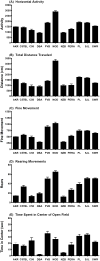
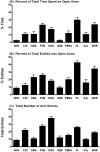
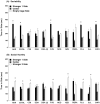
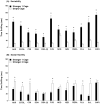
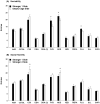
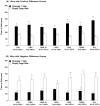

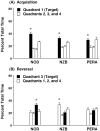

References
-
- American Psychiatric Association. Diagnostic and Statistical Manual of Mental Disorders (DSM-IV-TR) Washington, DC: American Psychiatric Association; 2000.
-
- Bakker CE, Verheij C, Willemsen R, van der Helm R, Oerlemans F, Vermey M, Bygrave A, Hoogeven AT, Oostra BA, Reyniers E, de Boulle K, D’Hooge R, Cras P, van Velzen D, Nagels G, Martin J-J, de Deyn PP, Darby JK, Willems PJ. Fmr1 knockout mice: a model to study fragile X mental retardation. Cell. 1994;78:23–33. - PubMed
-
- Bogue MA, Grubb SC. The Mouse Phenome Project. Genetica. 2004;122:71–74. - PubMed
-
- Brigman JL, Padukiewicz KE, Sutherland ML, Rothblat LA. Executive functions in the heterozygous reeler mouse model of schizophrenia. Behav Neurosci. 2006;120:984–988. - PubMed
Publication types
MeSH terms
Grants and funding
LinkOut - more resources
Full Text Sources
Other Literature Sources
Molecular Biology Databases

